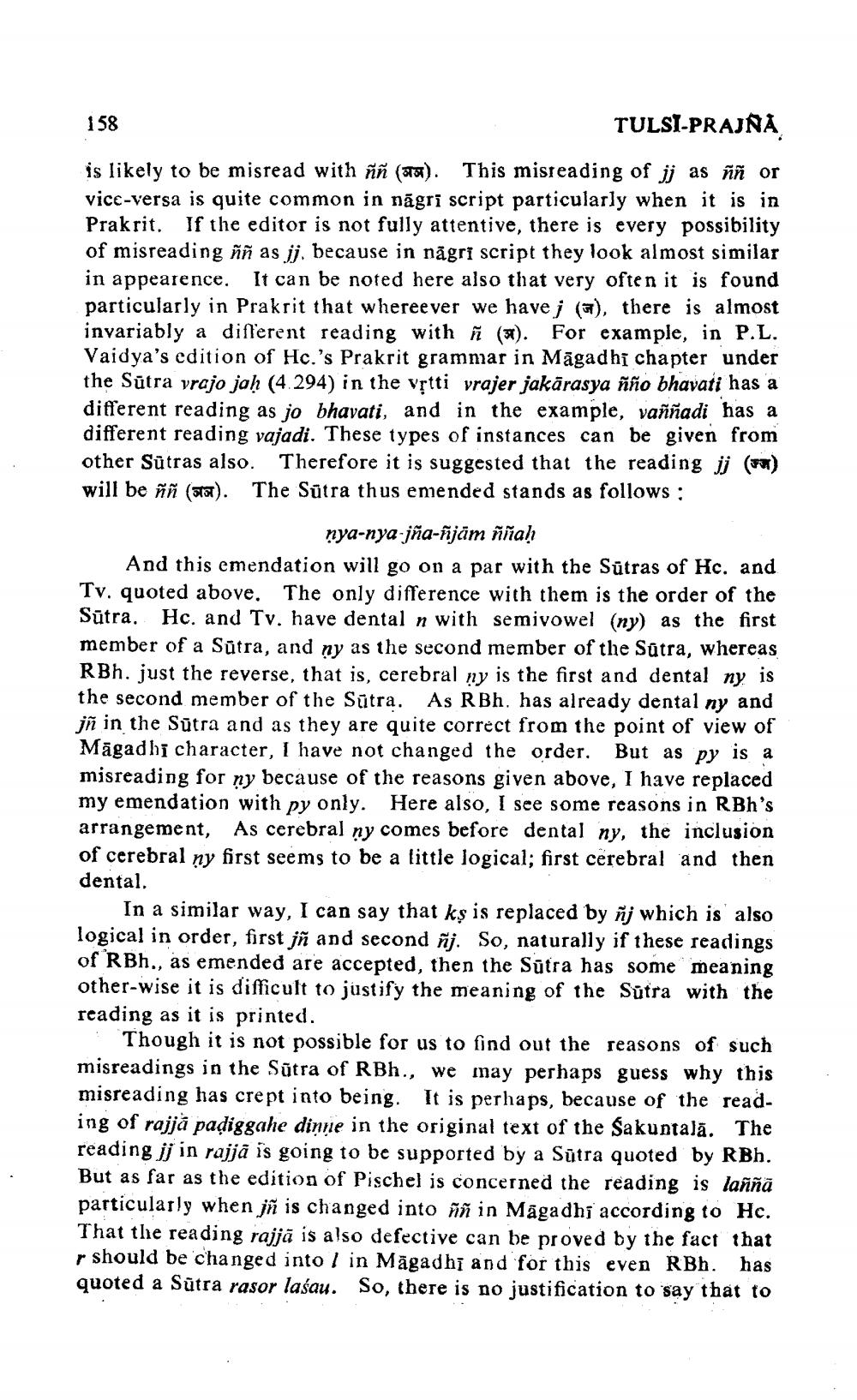________________
158
TULSI-PRAJNA
is likely to be misread with ññ (). This misreading of jj as ññ or vice-versa is quite common in nāgri script particularly when it is in Prakrit. If the editor is not fully attentive, there is every possibility of misreading ññ as jj. because in nāgri script they look almost similar in appearence. It can be noted here also that very often it is found particularly in Prakrit that wheree ver we have i (5), there is almost invariably a different reading with ñ (3). For example, in P.L. Vaidya's edition of Hc.'s Prakrit grammar in Māgadhi chapter under the Sūtra vrajo jaḥ (4.294) in the vștti vrajer jakārasya ñño bhavati has a different reading as jo bhavati, and in the example, vaññadi has a different reading vajadi. These types of instances can be given from other Sūtras also. Therefore it is suggested that the reading jj (FM) will be ññ (543). The Sūtra thus emended stands as follows:
nya-nya jña-ñjām ññah And this emendation will go on a par with the Sūtras of Hc. and Tv. quoted above. The only difference with them is the order of the Sūtra. Hc. and Tv. have dental n with semivowel (ny) as the first member of a Sūtra, and ny as the second member of the Sūtra, whereas RBh. just the reverse, that is, cerebral ny is the first and dental ny is the second member of the Sūtra. As RBh. has already dental ny and jñ in the Sūtra and as they are quite correct from the point of view of Māgadhi character, I have not changed the order. But as py is a misreading for ny because of the reasons given above, I have replaced my emendation with py only. Here also, I see some reasons in RBh's arrangement, As cerebral ny comes before dental ny, the inclusion of cerebral ny first seems to be a little logical; first cerebral and then dental.
In a similar way, I can say that kş is replaced by ñj which is also logical in order, first jñ and second ñj. So, naturally if these readings of RBh., as emended are accepted, then the Sūtra has some meaning other-wise it is difficult to justify the meaning of the Sūtra with the reading as it is printed.
Though it is not possible for us to find out the reasons of such misreadings in the Sūtra of RBh., we may perhaps guess why this misreading has crept into being. It is perhaps, because of the reading of raia padi
f rajja padiggahe dinne in the original text of the Sakuntalā. The reading ij in rajjā is going to be supported by a Sūtra quoted by RBh. But as far as the edition of Pischel is concerned the reading is laññā particularly when iñ is changed into ññ in Māgadhs according to Hc. That the reading rajjā is also defective can be proved by the fact that r should be changed into I in Māgadhi and for this even RB. has quoted a Sūtra rasor laśau. So, there is no justification to say that to




